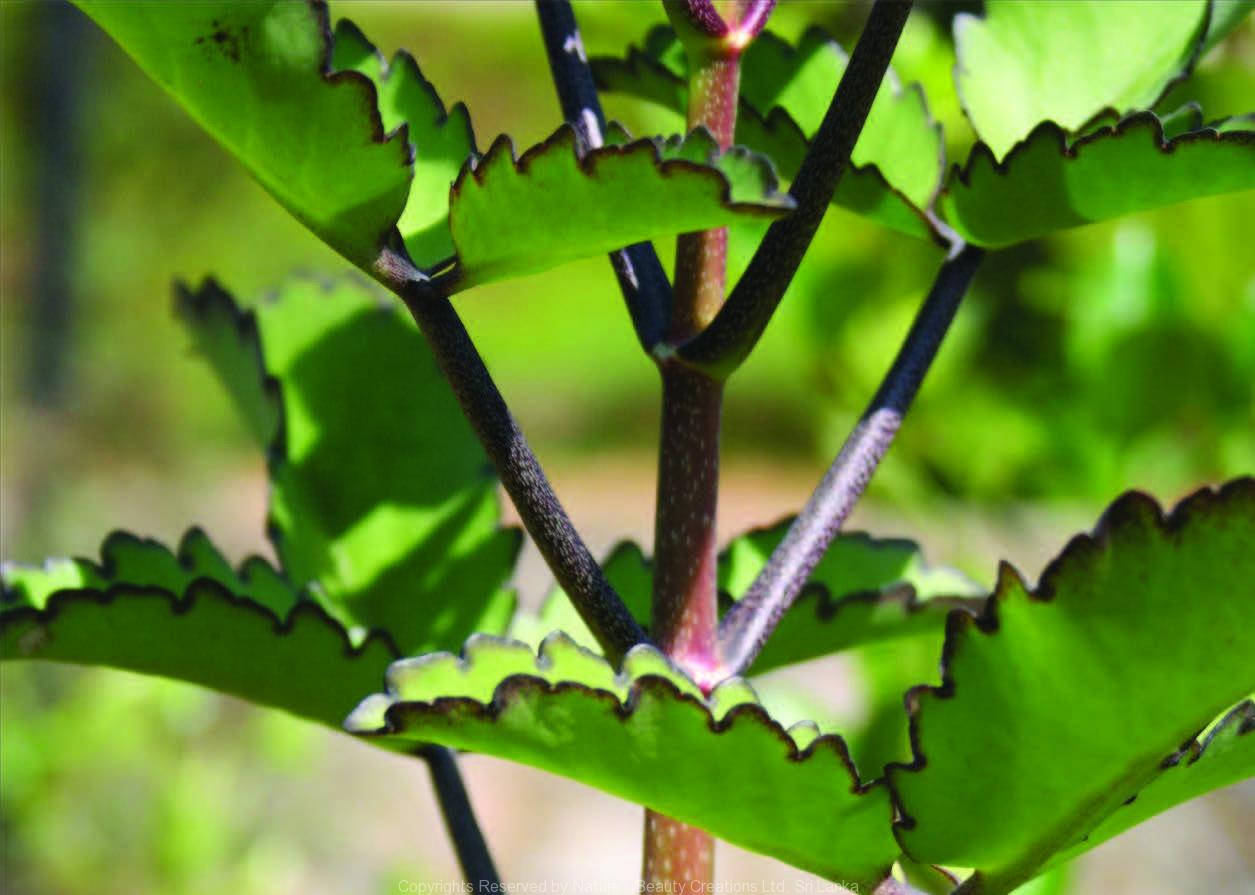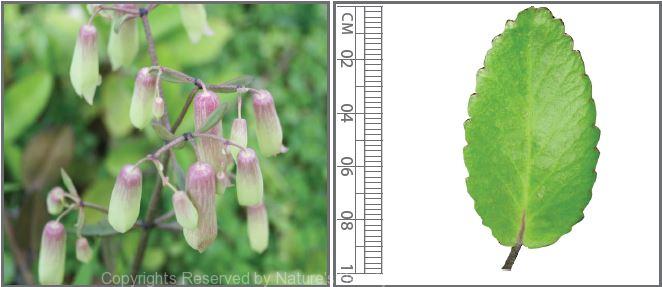

Traditional Knowledge
Useful plant parts :
Leaf
Uses in traditional medicine :
- Fresh leaf salad with red onion is taken for urinary calculi
- Porridge prepared of leaves improves urination
Scientific Research
Chemical constituents:
Flavonoids: quercetin and kaempferol, glycoside: kapinnatoside, bufadienolides: bryophyllin A–C, bersaldegenin-3-acetate, phenolic acids: p-coumaric, ferulic, syringic, caffeic, p-hydroxybenzoic acids and stigmasterol derivative from leaves
Bioactivity :
Aqueous and alcohol extracts of leaves: antileishmanial, antiasthmatic, antitussive, antinociceptive, anti-inflammatory, antidiabetic, antiulcer, wound healing; leaf juice: hepatoprotective, nephroprotective, immunosuppressive; bufadienolides: cancer chemopreventive; stigmasterol derivative: anti-inflammatory
Clinical:
Used as a treatment for overactive bladder syndrome
References : Afzal, M. et al., (2012), Anti-inflammatory and analgesic potential of a novel steroidal derivative from Bryophyllum pinnatum, Fitoterapia, 83(5), 853-8. Bergmann, B. R. et al., (1994), Immunosuppressive effect of the aqueous extract of Kalanchoe pinnata in mice, Phytotherapy Research, 8(7), 399-402. Betschart, C. et al., (2013), Randomized, double-blind placebo-controlled trial with Bryophyllum pinnatum versus placebo for the treatment of overactive bladder in postmenopausal women, Phytomedicine, 20(3-4), 351-8. Biswas, S. K. et al., (2011), Literature review on pharmacological potentials of Kalanchoe pinnata (crassulaceae), African journal of pharmacy and pharmacology, 5(10), 1258-1262. Gaind, K. N. and Gupta, R. L., (1973), Phenolic componants from the leaves of Kalanchoe pinnata, Planta Med, 23(2), 149-153. Harlalka, G. V. et al., (2007), Protective effect of Kalanchoe pinnata pers. (Crassulaceae) on gentamicin-induced nephrotoxicity in rats, Indian Journal of Pharmacology, 39(4), 201-205. Muzitano, M. F. et al., (2006), The antileishmanial activity assessment of unusual flavonoids from Kalanchoe pinnata, Phytochemistry, 67(18), 2071-2077. Nag, P. S. and Chaudhuri, A. K., (1991), Studies on the anti-ulcer activity of a Bryophyllum pinnatum leaf extract in experimental animals, J Ethnopharmacol, 33(1-2), 97-102. Nayak, B. S. et al., (2010), Wound healing potential of ethanolic extract of Kalanchoe pinnata Lam. leaf- A preliminary study, Indian journal of experimantal biology, 48, 572-576. Ojewole, J. A., (2005), Antinociceptive, anti-inflammatory and antidia- betic effects of Bryophyllum pinnatum (Crassulaceae) leaf aqueous extract, J Ethnopharmacol, 99(1),13-9. Salami, E. O. et al., (2013), Studies on the anti-asthmatic and antitussive properties of aqueous leaf extract of Bryophyllum pinnatum in rodent species, Asian Pac J Trop Med, 6(6), 421-5. Supratman, U. et al., (2001), Anti-tumor promoting activity of bufadieno- lides from Kalanchoe pinnata and K. daigremontiana x tubiflora, Biosci Biotechnol Biochem, 65(4), 947-9. Yadav, N. P and Dixit, V. K, (2003), Hepatoprotective activity of leaves of Kalanchoe pinnata Pers, Journal of Ethnopharmacology, 86(2-3), 197-202. Yamagishi, T. et al., (1989), Antitumor agents, Bryophyllin B, a novel potent cytotoxic bufadienolide from Bryophyllum pinnatum, J Nat Prod, 52(5), 1071-9.
Copyrights Reserved By
Natures Beauty Creations



